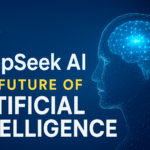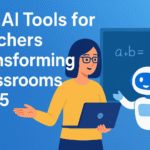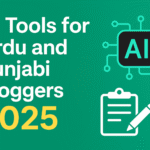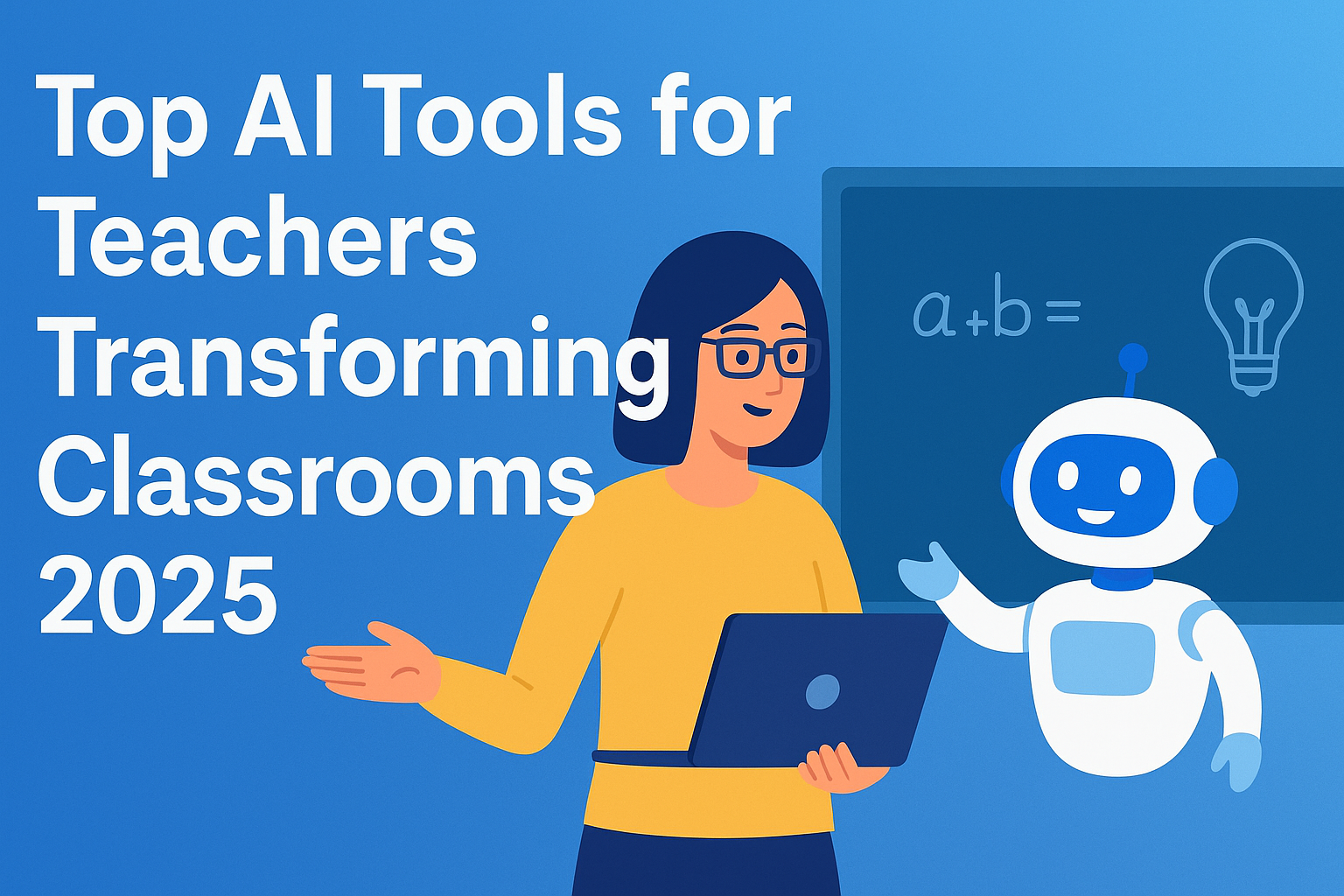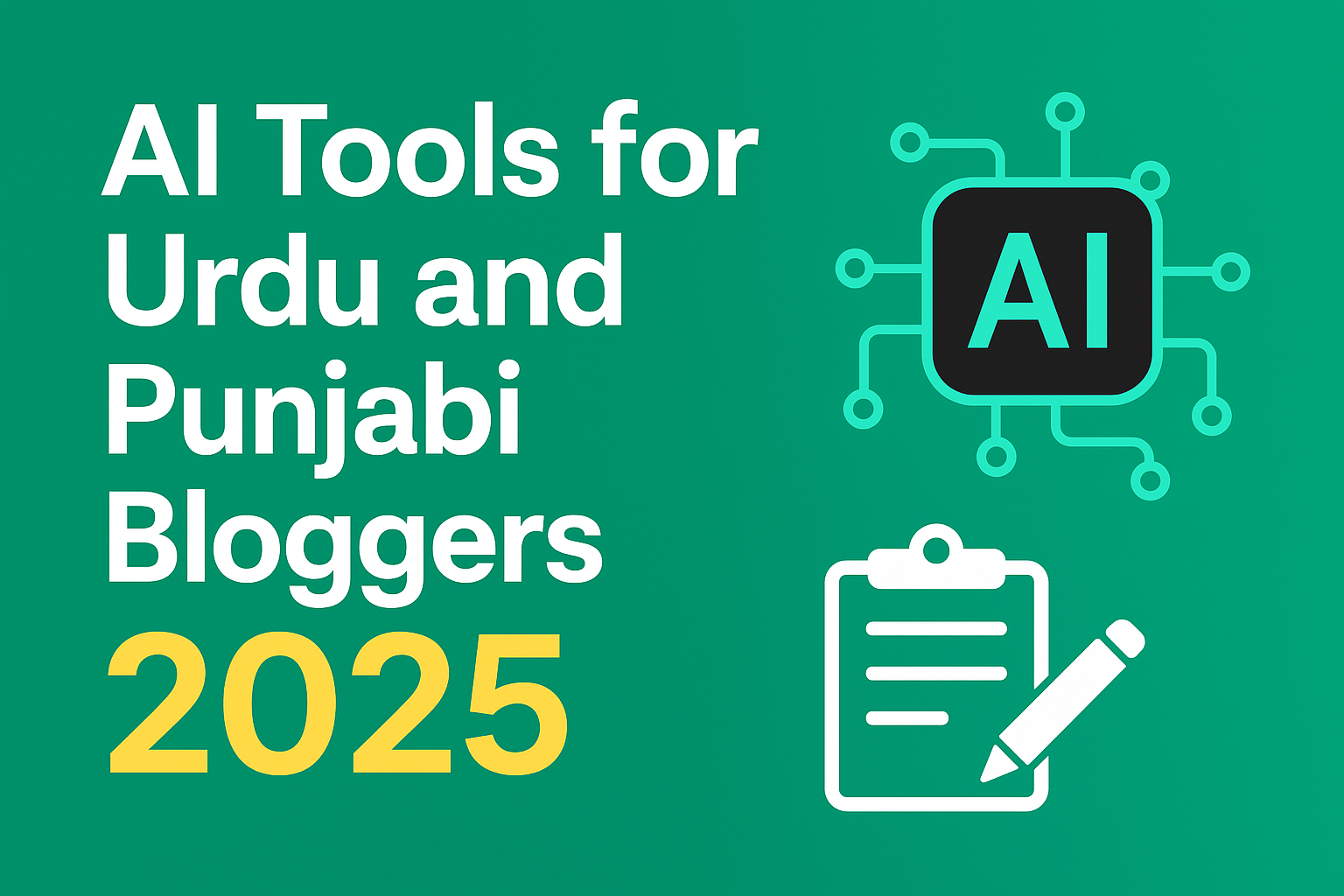In 2025, AI tools for teachers are transforming classrooms from the ground up. What once sounded like futuristic innovation has now become a practical reality. Artificial intelligence is not replacing educators—it’s empowering them to teach more effectively and creatively than ever before.
From automating grading and tracking student progress to generating personalized lesson plans, AI tools for teachers are redefining how classrooms operate. These digital assistants handle repetitive tasks in minutes, freeing educators to focus on mentoring, creativity, and meaningful interactions with students.
What makes this revolution remarkable is accessibility. Teachers no longer need coding knowledge or advanced tech skills; today’s AI tools for teachers are intuitive, user-friendly, and adaptable to any subject or grade level. They’re helping educators save time, boost engagement, and tailor learning to every student’s needs.
This article dives into how AI tools for teachers are reshaping modern education, highlights the best platforms available in 2025, and shares practical insights for teachers eager to integrate AI effectively—and ethically—into their classrooms.
Why AI Tools for Teachers Matter
As technology reshapes every industry, education is evolving faster than ever. Teachers are now turning to AI tools for teachers to simplify tasks, enhance learning outcomes, and stay ahead in a digital-first world. Understanding why these tools matter is the first step toward using them effectively in the classroom.
1. The Growing Need for Efficiency
Modern teachers handle overwhelming workloads. AI tools for teachers are reducing that burden by grading assignments, creating quizzes, and simplifying communication. The education AI market is expected to surpass $112 billion by 2034, showing rapid adoption across schools (HolonIQ).
2. Personalized Learning for Every Student
Traditional teaching often fails to meet all student needs. AI tools for teachers fix this by tracking learning patterns and customizing lessons automatically. For instance, platforms now adapt lesson plans and quizzes in real time to match student skill levels (Digital Learning Institute).
3. Reducing Burnout and Stress
With AI tools for teachers, repetitive administrative work is handled faster. Tools like Benchmark AI analyze written responses or generate feedback instantly (AWS Blog). Teachers regain time for personal interaction and creative instruction.
4. Making Education More Inclusive
AI can support students with disabilities or language barriers. Text-to-speech, translation, and adaptive reading apps make lessons more accessible. Even in developing regions, AI tools for teachers are bridging resource gaps (Scrumlaunch).
Top AI Tools for Teachers in 2025
| Tool | Purpose | Key Benefit |
|---|---|---|
| MagicSchool.ai | Lesson planning, grading, communication | 80+ teacher tools in one dashboard (MagicSchool.ai) |
| Brisk Teaching | Feedback and differentiation | Integrates easily with Google Classroom (BriskTeaching.com) |
| Eduaide.ai | Resource generation | Creates worksheets and assessments (Eduaide.ai) |
| Khanmigo (Khan Academy) | Virtual tutor & classroom assistant | Offers student guidance and teacher dashboards (Khanmigo.ai) |
| Canva + Magic Write | Visual and written content creation | Perfect for creative lesson materials (Canva.com) |
These AI tools for teachers show how AI covers every classroom function—from lesson design to student feedback.
How to Implement AI Tools for Teachers Successfully
- Start with Clear Goals
Identify whether you need help with grading, planning, or communication. Choose AI tools for teachers that solve a real pain point. - Test Before Scaling
Run small pilots. Ask students and fellow educators for feedback before full adoption. - Train Teachers Thoroughly
Training ensures that AI tools for teachers enhance learning, not confuse it. Many schools now hold dedicated AI workshops (Time.com). - Keep Human Oversight
Always verify AI-generated results. Human judgment remains vital in education. - Monitor Privacy Settings
Use tools that protect student data and comply with local laws.
Challenges and Concerns with AI Tools for Teachers
1. Data Privacy Risks
Many AI tools store student data on external servers. Teachers should understand how each platform handles privacy before use.
2. Algorithmic Bias
AI systems might unintentionally reinforce cultural or language biases. AI tools for teachers must be reviewed for fairness and inclusivity.
3. Overdependence
Relying too heavily on AI tools for teachers may reduce creative teaching methods. Balance is key—AI should support, not replace, human educators.
4. Access Gaps
In low-resource areas, limited internet and devices can hinder AI adoption. Affordable mobile-based AI tools for teachers are helping close this gap.
5. Ethical Boundaries
Students might misuse AI for assignments. Schools must clarify acceptable AI use (Axios).
Real Teachers’ Opinions
“AI makes it easier to plan classes and communicate, but it doesn’t replace empathy.”
— U.S. teacher on AI tools for teachers (Reddit)
“I tried AI lesson tools — still prefer to tweak things manually.”
— High school instructor discussing AI tools for teachers
Teachers are adapting gradually, balancing excitement with caution.
Future of AI Tools for Teachers
- Real-time AI Coaching – Video-based feedback will help teachers improve classroom delivery.
- Localized AI Content – AI tools for teachers will support multiple languages and regional syllabi.
- Smarter Student Analytics – AI will detect emotional cues and learning fatigue.
- Integration with LMS – Seamless use with Google Classroom and Canvas will make workflow smoother.
- Ethical AI Frameworks – More transparency in how educational AI decisions are made.
By 2030, every teacher is expected to use some form of AI assistance in daily teaching.
Best Practices for Educators
- Use AI tools for teachers alongside traditional teaching.
- Set classroom rules for responsible AI use.
- Regularly check updates and privacy settings.
- Encourage students to explore AI creatively—like generating quiz ideas or summarizing topics.
- Stay updated through trusted edtech blogs and webinars.
Conclusion
AI tools for teachers are revolutionizing education by blending intelligent automation with human creativity. These innovations are helping educators design smarter lessons, manage classrooms efficiently, and offer every student a more personalized learning journey. By reducing routine workloads, they allow teachers to focus on what truly matters — inspiring curiosity and nurturing growth.
As schools continue to adopt technology, AI tools for teachers will play an even greater role in shaping inclusive and adaptive education systems. Yet, it’s essential to remember that while AI enhances teaching, it can never replace the empathy, insight, and connection that only a human teacher can provide. The best results will always come from a partnership between teacher and technology.
For deeper insights into evolving education and technology trends, explore this related article on my site:
➡️ Pakistan AMRAAM Deal 2025

